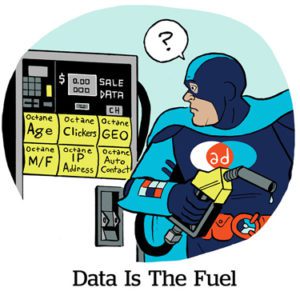Disney is trying to achieve the stream dream.
On Tuesday, Disney announced programmatic integrations with LiveRamp and Experian, which will join The Trade Desk’s UID2 as identifiers that Disney advertisers can use for audience matching and programmatic buying.
Identity underpins programmers’ selling point to advertisers, who want a better understanding of their reach and frequency across channels.
For Disney, working with other identity providers is “really about expanding the scale and the accuracy” of audience buys on the broadcaster’s channels, Dana McGraw, SVP of audience modeling and data science, told AdExchanger.
The more IDs Disney has in its audience graph, she added, the greater the scale and the better the accuracy for targeting and measurement.
“Just like we did with The Trade Desk, this integration allows advertisers to identify audiences in real time and activate them in a programmatic, biddable environment,” said Jamie Power, Disney’s SVP of addressable sales.
Keep your options open
In Disney’s case, this activation means giving advertisers more options to increase their match rates.
Expanding the use of Disney’s audience graph with other identity sources lets advertisers activate against the audiences they deem high value, Power said.
Advertisers will be able to onboard their audience segments built through LiveRamp or Experian onto Disney’s clean room to match with Disney’s audience graph, McGraw said. Advertisers could also bring in their own first-party data, and Disney can run a match against Disney’s identifiers.
“Either way, interoperability should increase advertisers’ match rates and the scale of their audiences,” McGraw added.
According to McGraw, Disney’s clean room match rates are currently at least three times higher than traditional data onboarding methods. And that number is expected to keep growing as new sources of identity are added.
Staying on target
Increased accuracy lines up with Disney’s plans to boost targeting parity between its digital channels, including Disney+.
Today, Disney+ doesn’t offer much in terms of targeting. But come July, Disney+ buyers will get more options to reach audiences ages 18 and up, which “opens up” all Disney inventory for better targeting, she added.
Disney’s audience graph includes insights on linear TV viewership for planning and measurement, including automatic content recognition data. Programmatic activation against new identity sources is only available for streaming and digital inventory.
For good measure
Measurement is also on the entertainment giant’s radar.
Connected TV still has a lot of measurement challenges, McGraw said, but the idea is to fill in those gaps by plugging more data and identity into its clean room.
For example, Disney integrated with VideoAmp’s TV viewership data in December, which McGraw said is “a really good example of how Disney is using its ID graph to increase measurement accuracy.”
Through this, buyers can use linear TV viewership from Disney and VideoAmp to help measure incremental reach, Power said.
Playing nice
Speaking of interoperable, though, clean rooms still aren’t.
An advertiser executing a buy through Disney’s clean room, for example, can’t directly measure the results of that campaign against its performance on other publishers’ platforms.
And while Disney acknowledges its clean room is designed only for scaling on Disney inventory, McGraw says the expansion is still a step in the right direction for industrywide change.
“We’re using interoperability to standardize the way our inventory is viewed across multiple [identity] vendors that an advertiser might use,” McGraw said.
And if other CTV publishers pursue similar identity activations programmatically, advertisers will get a clearer idea of performance across publishers due to more accurate measurement.
Ultimately, McGraw said, the expansion of Disney’s audience footprint “lends itself to an industry solution based on interoperability.”














